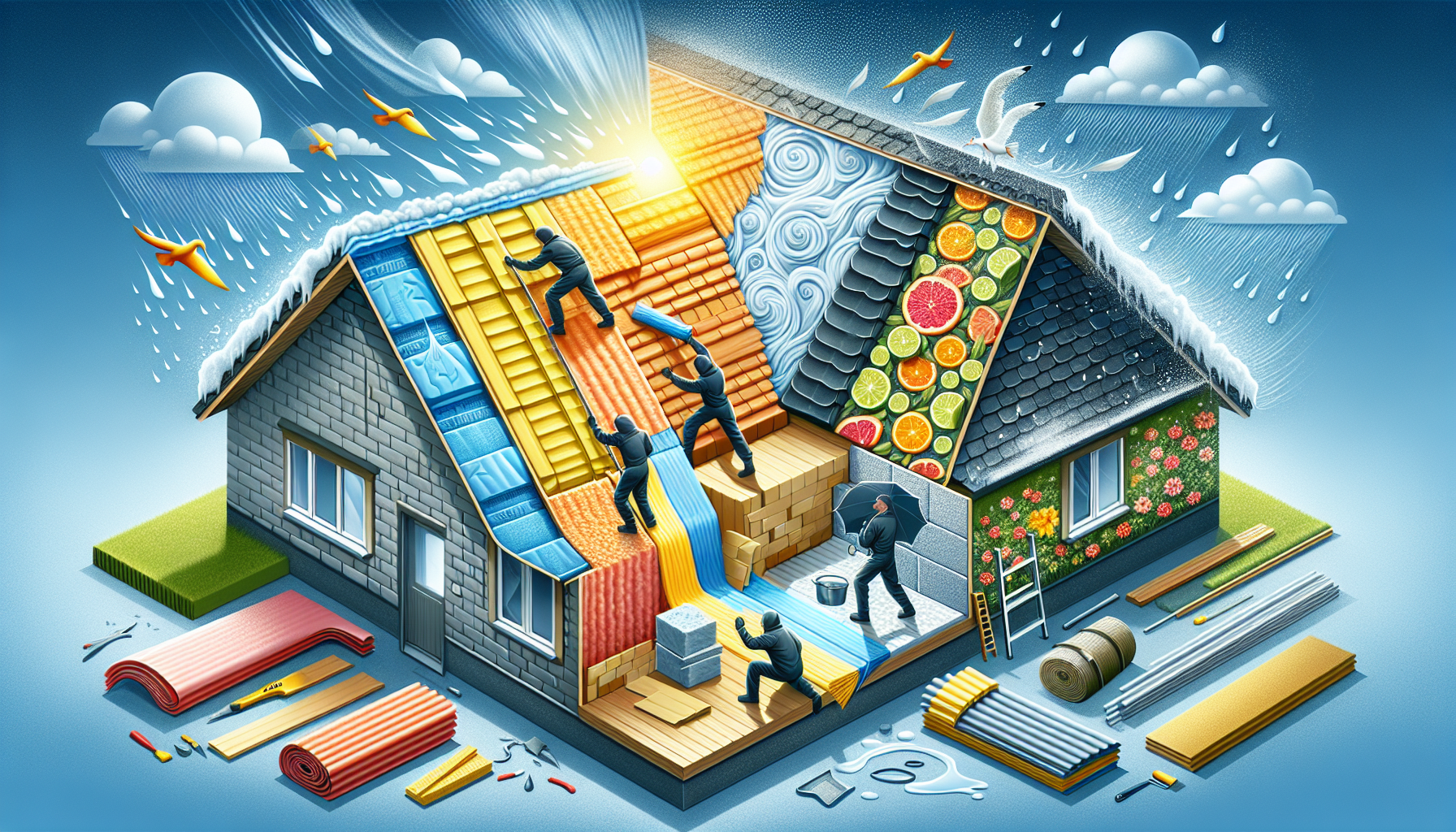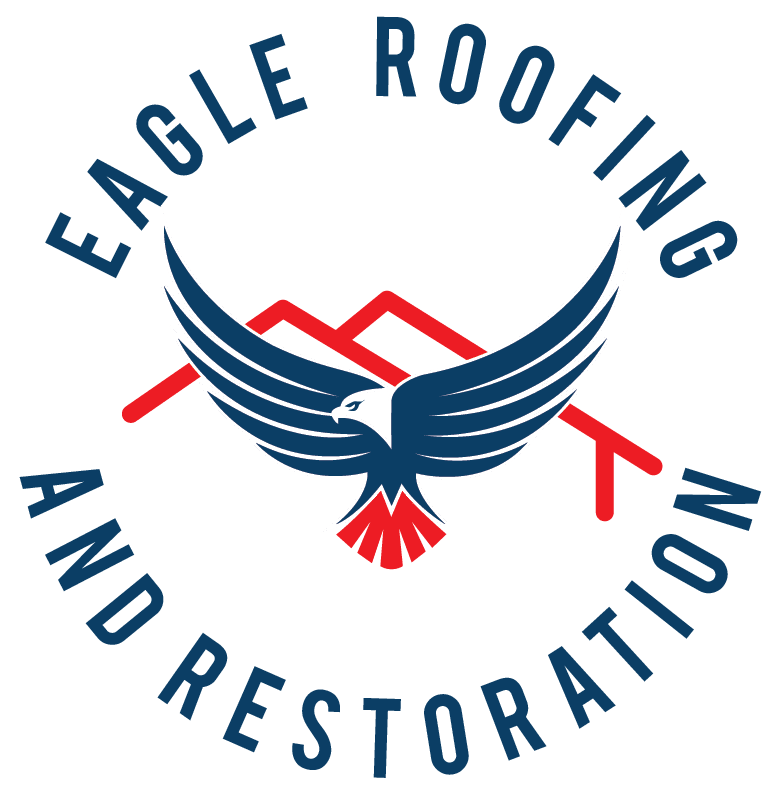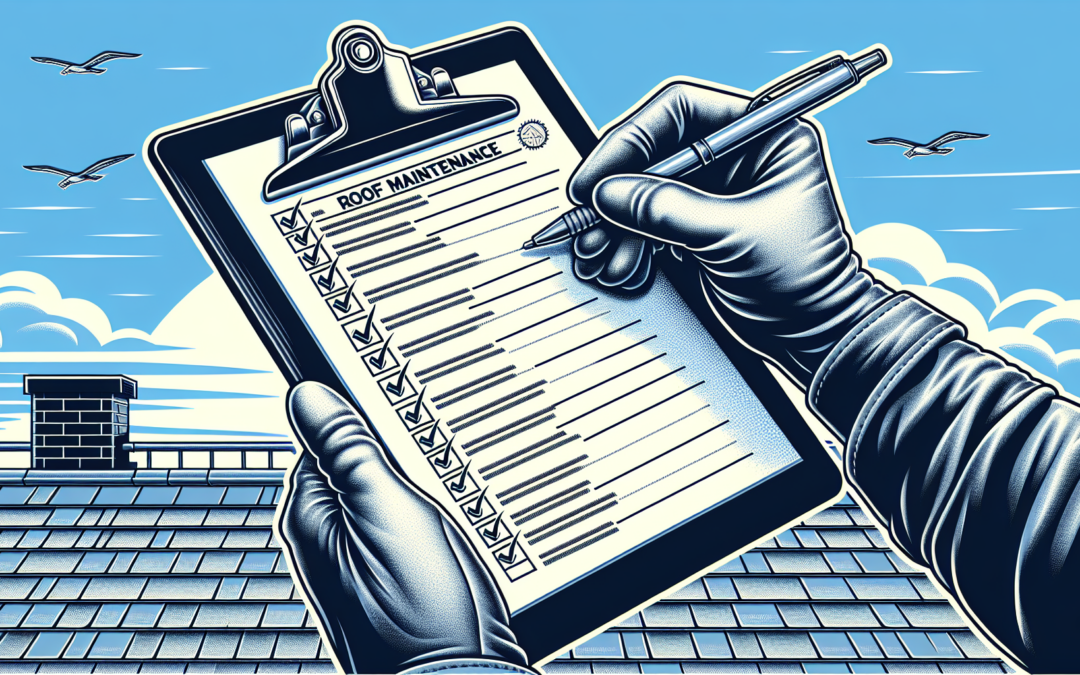Regular roof maintenance is crucial for prolonging your roof’s lifespan and avoiding expensive repairs. But, how often should you inspect, clean, or fix your roof? Our guide cuts through the noise to provide step-by-step instructions on keeping your roof in peak condition, season by season.
Key Takeaways
- Strategic seasonal roof care is required to adjust to the challenges of different weather patterns, trimming trees, and repairing damage to maintain roof stability year-round.
- Continuous monitoring and prompt action upon early warning signs like leaks, structural damage, or compromised shingles can prevent significant damage.
The Essentials of Roof Maintenance
Consider your roof the stalwart protector of your castle, tirelessly standing guard through the changing seasons. Undeniably, regular roof maintenance plays a vital role in both monitoring the condition of your roof and guaranteeing your home’s longevity and integrity.
Roof maintenance includes a well-orchestrated mix of inspections, cleaning, and timely repairs. Conscientious homeowners recognize the importance of removing roof debris to prevent water backup and leaks, and they understand the value of enlisting a roofing contractor for expert evaluations and repairs. Proper maintenance is the cornerstone of roof care, preventing the need for costly repairs or premature roof replacements and ensuring your roof’s life is stretched to its full potential.
Regular Roof Inspections
Pause for a moment and think of your annual health check-up—now apply that principle to your roof. An annual roof inspection acts as a preventive measure, a way to catch issues early on and keep your roof in top condition.
During a comprehensive roof inspection, every component, from shingles to gutters, undergoes scrutiny. It’s about looking beyond the surface, uncovering the less obvious issues that, if left unaddressed, could lead to significant roof problems.
Annual Roof Maintenance: Keeping Your Roof in Top Condition

As the seasons shift, the yearly duty of roof maintenance calls. It’s not just about checking off items on a roof maintenance checklist; it’s about engaging in a routine that preserves the structure and functionality of your roofing system.
This yearly tune-up, also known as routine maintenance, involves clearing the gutters of leaves and debris, inspecting for signs of wear like loose or missing shingles, and cleaning the roof surface to prevent damage. Regular roof maintenance not only preserves its visual appeal but also strengthens its defenses against the elements, ultimately saving money by averting the need for a new roof before its time.
Addressing Repairs Promptly
Consider a minor leak left unchecked, slowly transforming into a massive hole in your ceiling. This scenario underlines the importance of addressing roof repair promptly—it’s just a matter of maintenance diligence. Repairing damaged shingles and flashings at the first sign of trouble preserves the water-tightness of the roof, ensuring everything is working correctly and safeguarding against water damage.
By regularly inspecting your roof and addressing potential problems, you’re taking decisive steps to maintain your roof and protect your home from the costs and headaches of more severe damage.
Seasonal Roof Care: Preparing for Weather Changes

As the year unfolds, each season brings unique challenges and weather patterns that your roof must withstand. It’s a tailored approach, recognizing that what works for a summer sun won’t necessarily suffice when winter’s chill sets in.
As you journey through the seasons with your roof, remember that each flake of snow, drop of rain, and ray of sunshine impacts your roof in different ways, necessitating a flexible yet vigilant approach to roof care. Inspecting your roof regularly is an essential part of this process.
Seasonal Roof Checkups: Maintaining Stability Throughout the Year
Visual inspections act as a record, documenting the state of your roof as it navigates seasonal transitions. These checkups are crucial for maintaining stability throughout the year, acting as a preventive measure against weather-related damage. From the flashings around chimneys to the vent pipes, vents, and skylights, each component requires careful evaluation for signs of wear or deterioration.
Winter Roof Maintenance
Winter’s icy grip can be particularly harsh on your roof. To fight against the creation of threatening ice dams and the resulting damage they can inflict, maintaining adequate attic insulation to keep a steady roof temperature is vital.
With the right preparations and regular checks using a broom or leaf blower to clear accumulation, your roof can emerge from the cold unscathed, ready to face the thaw of spring.
Spring Roof Maintenance
As nature awakens with the arrival of spring, your roof maintenance routine should follow suit. It’s time to clear out those gutters that have braved the winter, ensuring they’re free of any debris that could cause blockages during spring rains.
Trimming trees and managing foliage around the roof also becomes a priority to prevent damage from branches during rainstorms and to minimize the accumulation of leaf debris.
Summer Roof Maintenance
The summer sun, while welcome for beach days and barbecues, can be a formidable foe for your roof. The relentless exposure to UV rays can lead to the deterioration of roofing materials, shortening the lifespan of your roof.
It’s also wise to inspect the attic during the summer months, as excessively high temperatures can cause shingles to crack and curl. Look out for signs of moisture and mold, as they are telltale signs of potential leaks that need to be addressed to prevent water damage.
Fall Roof Maintenance
Autumn is a crucial time for roof maintenance, as falling leaves and branches pose a threat to your roof’s well-being. Here are some steps you can take to protect your roof:
– Trim tree limbs that are close to your roof to prevent them from falling and causing damage.
– Remove any debris, such as leaves and branches, from your roof to prevent water damage.
– Keep tree branches at a safe distance from your roof, ideally 8–10 feet, to minimize the risk of debris falling onto your roof.
By following these steps, you can maintain the structural integrity of your roof system and prevent potential damage.
Signs Your Roof Needs Repair or Replacement
The signs that your roof needs repair or replacement can be as subtle as a small leak or as glaring as structural damage. Frequent inspections are crucial, especially focusing on areas where sealant and flashing are used, as these are typically weak points. Staying attentive to the condition of your roof can mean the difference between a simple repair and the major expense of a full roof replacement.
Identifying Roof Leaks
Identifying roof leaks early can save you from extensive water damage to the interior of your home. Look for water stains, mold, and other indicators of leaks and take immediate action to address them.
Neglecting even the most minor leaks can result in serious problems, affecting both the structure of your roof and the well-being of your home and belongings.
Assessing Structural Damage
When the integrity of your roof is compromised, it’s a matter of safety and stability for your entire home. Assessing structural damage is a critical step in determining the overall health of your roof. Some signs of structural damage include:
-
A sagging or uneven roofline
-
Cracked or broken shingles
-
Leaks or water stains on the ceiling
-
Visible signs of rot or decay
If you notice any of these signs, it is important to seek professional assessment and possibly extensive intervention. In some cases, moisture penetration may necessitate a full roof replacement, even if the visible damage seems minor.
Continuous Monitoring: Staying Vigilant for Early Warning Signs
The secret to successful roof maintenance lies in ongoing monitoring and following some essential roof maintenance tips. Stay alert for early warning signs such as:
-
Subtle changes in the appearance of your roof
-
Unexpected increases in utility bills, which could hint at energy loss due to roof issues
-
Water stains on interior ceilings, which are often indicators of a leak that could cause further damage if ignored.
Summary
By understanding the essentials of roof care, homeowners can protect their investments and avoid the stress of unexpected roof failures. At Eagle Roofing, we specialize in comprehensive flat roofing systems and services, including flat roof repairs, replacements, and maintenance. Trust us to maintain your roof in optimal condition.
Whether you’re clearing gutters, scheduling inspections, or simply keeping an eye out for loose shingles, every step you take is an investment in the future of your home.

